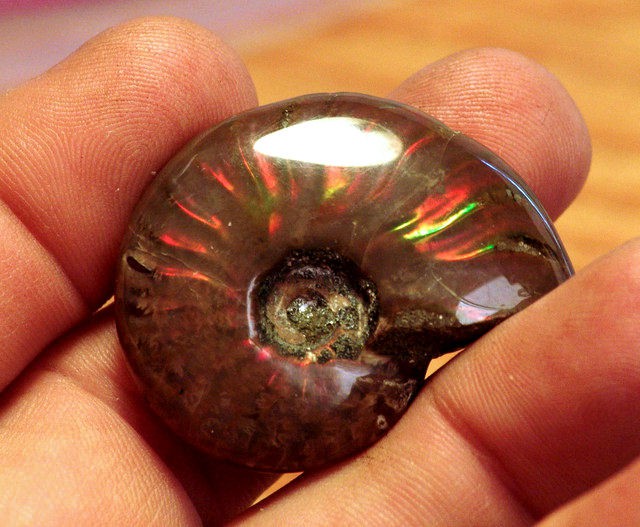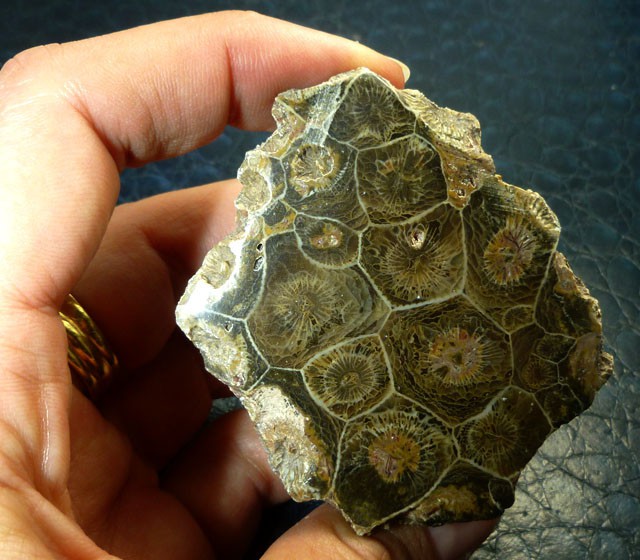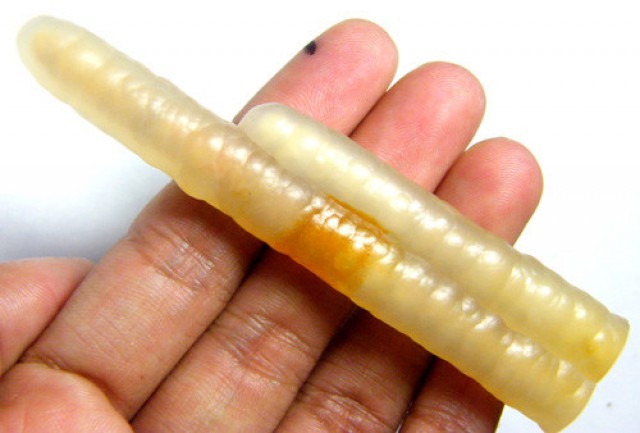
Published at 18th Oct 2018
Modified at 2nd Aug 2023
Fossils Of The World
Many people ask, “What are fossils?” In theory, almost anything that was once alive could become a fossil – even a scrap of the jelly like tissue from the soft body of a sea creature. In practice, most fossils are formed from hard parts of animals and plants such as teeth, bones and shells or tree bark and cones. Fossils are found in all continents.
Today the accepted definition of a fossil involves and organic origin – an object that was once living. This includes all organisms or life forms and parts thereof from microbial organism, tiny plants and insects such as ants and gnats, to the greatest trees, sharks, dinosaurs, whales and mammoths.
When most living things perish, they begin to rot and decay. Their remains may be decomposed by fungi and bacteria, and torn up, burrowed into or crunched to pieces by all manner of scavengers, from maggots to hyaenas.
What is left weathers into fragments by the action of sun, rain, wind, ice and other elements of weather. In the water similar decay occurs, aided by waves and water currents , and the decomposing actions of fungi, worms, bacteria and others. So the vast majority of living things die and disappear without trace. They are recycled by natural processes back into the ground, lake or river bottom, or sea bed. They leave no fossils.
Fossilization usually takes a long long time, and it is a chance ridden process. As a result,usually only the harder parts of living things are preserved as fossils. These are the parts that resists decay, rot and scavenging, and which persists long enough for preservation to begin. Again, popular myth says the only bones form fossils, and perhaps teeth too. But there is a long list of other parts which are prime candidates for fossilization.

FOSSILISED INVERTEBRATES
Invertebrates or “spineless” animals range from the simples sponges, the poriferans, which are devoid of nerves or muscles or brains, to complex and highly developed cephalopod molluscs such as the octopus and squid, with sophisticated and intelligent behaviour. The mollluscs are one of the best represented invertebrate groups in the fossil record, since their had shells end up in the high probability preservation conditions of the seabed.
One of the largest invertebrate groups is the arthropods or joint legs. It takes in the extinct trilobites, myriad crustaceans such as barnacles and crabs, and the land dwelling insects and arachnids.
SPONGES
The Sponges, phylum Porifera, are strange animals that live permanently to the rocks or mud of the seabed. They flush water through their porous bodies and filter out tiny food particle. Sponges have an extremely simple anatomy, lacking specialised organs, nerves and muscles and possessing only a few basic cell types. From Cambrian times most sponges have left plentiful fossils of their mineralised bodies.
Most sponges, past and present, lived in the seas, and typically had a hollow, porous body attached to the seabed at one end. Water is drawn through the body wall, where feeding cells lining the interior extract food particles. The internal skeleton can consist of horny material, had, mineralised shards or spicules, or both horny and mineralised elements, embedded in the body wall.

WORMS
Worms are entirely soft-bodied animals, which means they are rarely found as fossils except where there is an exceptional level of preservation. Worms are found in the Burgess Shale Formations of the North America preserved as carbon films, and in the Chengjiang Formations of China, where they have been minerealized with pyrites. Their trace fossils, such as furrows and burrows, are found worldwide.

CRUSTACEANS
Crustaceans are the largest group of sea-dwelling arthropods, occupying a vast variety of environments and with more than 40,000 living species, including some in freshwater and on land. They include crabs, lobsters, shrimps, prawns and theshrimp like krill in the seas, as well as pillbugs and woodlice on land, water-fleas in ponds, and barnacles along seashores.
Crustaceans are found in the fossil record from as early as the Cambrian period But apart from barnacles, with their strong calcareous plates, they are generally rare due to their lack of truly hard body parts. It was not until the appearance of decapods, or “ten-limbs”- crabs, lobsters, crayfish shrimps and prawns with their thick exoskeletons that crustaceans began to fossilize with some regularity.
The group of crustaceans we are most familiar with is the decapods. This term refers to the “ten-feet”or rather, limbs of these types of crustaceans, being the two front pincers and usually four pairs of walking legs. Decapods include more than 20,000 living species, which encompass shrimps and prawns two common names that have no strict scientific basis – along with al types of crayfish, lobsters and crabs.
ARTHROPODS – SPIDERS – SCORPIONNS
The arthropods include several kinds of chelicerates -spiders, scorpions, xiphosurans (horseshoerabs) and eurypterids (sea scorpions). These all possess chelicerae, powerful front appendages variously modified as pincers, claws or fangs. Scorpions and spiders are known as arachnids, characterized by four pairs of walking limbs.
Scorpions were among the first wave of land animals more than 380 milllion years ago. INSECTS – in the fossil record, the vast arthropod or “jointed-leg” group is dominated by aquatics, such as the still thriving crustaceans and long-gone trilobites. In comparison there are few remains of the main arthropod group we encounter nearly every day – insects.
This is because most were (and are) small, relatively fragile and often consumed by predators. If not, they died in places such as moist forests, where decay was swift. A typical insect has three principal body parts. These are the head, usually bearing antennae or feelers, eyes and mouthparts, the thorax, carrying the wings and legs and the abdomen containing the insects digestive, waste removal and reproductive organs.
Typically, an adult insect has six legs and four wings, although true flies (diptera) have just one pair of wings.
FOSSIL – SEED FERNS
There are more than 11,000 species of fern today, making them the largest main group of plants after the flowering plants, or angiosperms. Like many other types of simpler plants, they reproduce by spores. Ferns first appeared in the Devonian, thrived through the Carboniferous, became less common during the late Permian and the Middle cretaceous but underwent a resurgence during the Tertiary.
The seed ferns or pteridosperms were once grouped with the true ferns. However, discoveries during the last century showed that these plants reproduced by seeds, which form when female and male structures come together at fertilization, as in the conifers and flowering plants. This was an advance on more primitive spore bearing and other methods used by horsetails, ferns and other simpler plants. The leaves or fronds of seed ferns are commonly found in “Coal Age” carboniferous deposits, mainly across the Northern Hemisphere. The different parts of what is now known to be a single plant have often received different names.
Seed ferns combined features of true ferns with characteristics of the more advanced trees known as cycads.

FISH – SHARKS
The sharks were among the very earliest groups of fish, and their sleek, streamlined body design has changed little throughout their long history. Sharks and their close cousins the rays are together known as elasmobranchs and, like other fish have an internal skeleton. This skeleton is unusual, however, as it is made of the tough, grisly substance known as cartilage, rather than bone, giving them and chimaeras, or ratfish, the name of cartilaginous fish (Chondrichthyes), Cartilage degrades more rapidly than bone after death, so most of our knowledge about prehistoric sharks comes from their well-preserved. Abundant teeth and fin spines. These date back to the Early Silurian Period, more than 420 million years ago.
Fish Fossil
Most Fish species today and those found in the fossil record, have skeletons made of bone, not cartilage and belong to the fish group Osteichthyes. Devonian times saw a major group of these fish, known as lobe-fins, or sarcopterygians. Lobe-fins lungfish and coelacanths, and also long-extinct fish closely related to the ancestors of tetrapods-amphibians and other four legged vertebrates.
PRIMITIVE AND RAY-FINNED BONY FISH
Most fish today belong to the ostechthyan (bony fish) sub group ray fins, or actinopterygians. In these the spine-like fin rays, which hold each fin open like the ribs of a fan, emerge directly from the body rather than from a fleshy or lobe-like base. However, before the ray finds developed, there were earlier groups including the jawless fish, or agnathans, and the long-extinct placoderms or flat plated skins.
FISH – TELEOSTS
Most of today’s fish are in the ray fin (actinopterygian) group called teleosts or “complete bone” where few, if any, parts of the skeleton are made of cartilage (gristle). The teleost include the vast majority of living fish with more than 20,000 species. They arose in the Triassic period and underwent rapid evolution in the mIddle Cretaceous when many of the modern families became established.
Among the modern ray finned bony fish, teleosts, the largest subgroup include the peerciforms, or perch like fish, such as Mioplosus. Together with their close relatives, teleosts make up the Acanthopterygii, which includes more than half of all kinds of living fish. Their characteristics features include stiff bony spines in or near the front dorsal fin, giving the whole group the common name of spiny rayed fish.
TETRAPODS – AMPHIBIANS
Tetrapods were and are vertebrates with limbs which today includes, amphibians, reptiles birds and mammals (although some, such as snakes, have lost limbs during their more recent evolution. The first airbreathing terapods probably evolved from fleshy finned fish resembling Eusthenopteron and Panderchthys into creatures such as Ventastega and Acanthostega some 380-360 million years ago.
In the past some types of amphibian were perfectly at home on dry land and presumably needed water only to lay their jelly covered eggs in when spawning. Living amphibians are known in modern classification shcemes as lissamphibians. The three main groups are frogs and toads, the tallest anurans salamandeers and newts, the tailed urodeles and the legless, worm like caecilians or apodans.
SHOP FOR FOSSILS
Search the Gemstone Encyclopedia
Related Auctions
11 bids
NewRelated Articles
Azotic treatment of Topaz and Quartz is a treatment that creates a layer of color over a gemstone. Learn more about this treatment and check out our stones fro sale.
8th May 2018
There are dozens of quartz and chalcedony gems with various colors and patterns. Learn all about quartz properties and every type of quartz, from amethyst and agate to plasma and phantom quartz!
15th Oct 2020
Let us explain how to buy gems on the internet. We have the largest range of gemstones on the internet and it can be a little overwhelming at first. Let us help you with some useful tips.
3rd Oct 2018
Latest Articles
Catapleiite is a lesser-known mineral and rare gemstone often found as stunning tabular rosettes near other rare stones. Discover the history, prices, benefits, and properties of catapleiite!
28th Apr 2025
Yugawaralite is a rare colorless, white, or pinkish zeolite crystal named for its discovery in Yugawara, Japan. Here we uncover the multifaceted history, properties, prices, and uses of yugawaralite.
24th Mar 2025
Simpsonite is a lesser-known mineral known on the gem market for its durability, yellow-orange color, and rarity. Discover all the properties, uses, prices, and history of simpsonite.
3rd Mar 2025
Article Categories
How To's is where you will find helpful articles from gem Rock Auctions on how to cut gemstones, select gemstones and buy gemstones.
9 Articles















